One of the reasons people go for small and cutesy pets is because they don’t feel threatened by them, rather develop a sense of protection. Often people think larger pets would be hard to control, or even dangerous. But that is not the case at all. Pets are pets because they don’t mean any harm.
I’ll give an example via the salamanders since they’re the hottest bunch in the market right now. Even the largest salamanders are friendly towards humans and pose no serious threat.
But I think you’ll need more persuasion than just a statement, wouldn’t you? I also took that into account and assembled this blog post that will remove any inhibitions you might have against salamanders. Give it a read…
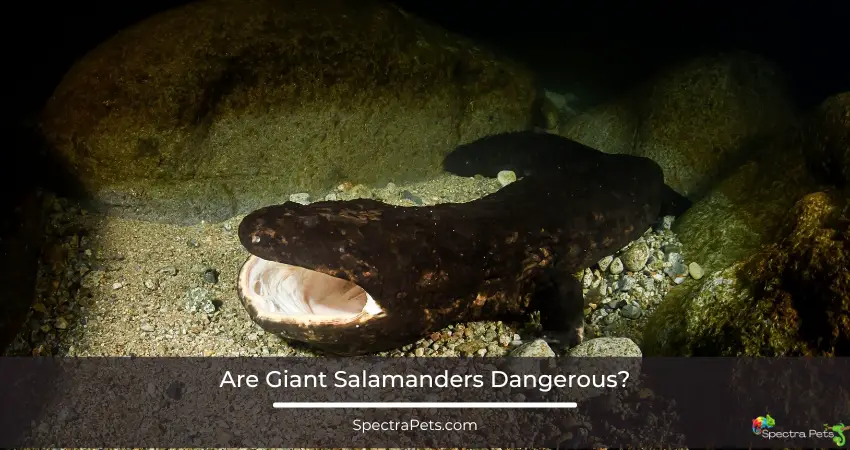
What Are Giant Salamanders?
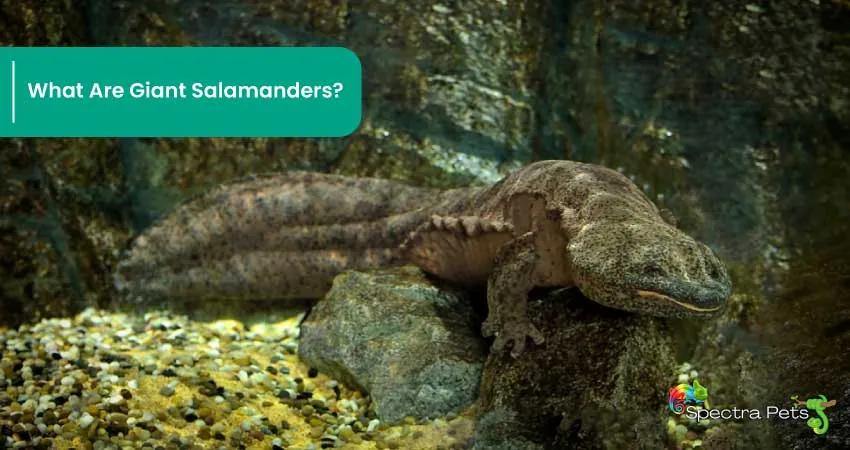
Let’s learn a bit about giant salamanders first.
Giant salamanders, also known as giant hellbenders, are a type of large, aquatic salamander that is native to parts of North America. These animals are known for their distinctive appearance, which includes a flattened head and body, wrinkled, slimy skin, and small, close-set eyes.
These massive creatures can reach lengths of up to 5 feet (1.5 meters), making them one of the largest species of salamanders in the world.
You can typically locate these amphibians in clear, cool streams and rivers, where they prefer to live in areas with rocky bottoms and plenty of covers. They are nocturnal animals and are most active at night when they come out to hunt for insects, crayfish, and other small aquatic prey.
Giant salamanders are considered a species of concern in some parts of their range due to habitat loss and other human-related impacts. They are also threatened by pollution and other environmental factors, and their populations are declining in many areas. As a result, they are protected in some parts of the United States and Canada, and conservation efforts are underway to help protect these fascinating creatures.
So what is their nature like? Are they aggressive and dangerous animals? Find out more in the next section!
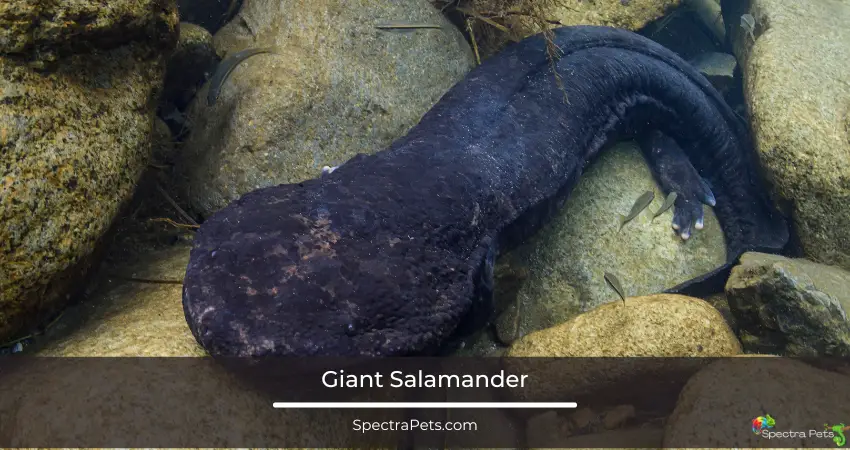
Are Giant Salamanders Aggressive?
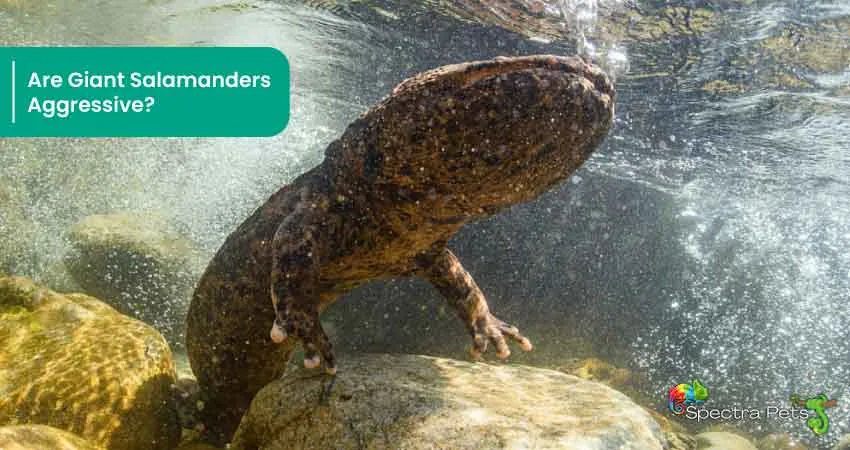
In short, no, giant salamanders are not aggressive animals and are not dangerous to humans at all. These animals are generally docile and non-aggressive, and they are not venomous or poisonous. They do not have any natural defenses that make them a threat to humans, and they are not known to attack or bite people.
Giant salamanders are also an important part of their ecosystem and play a vital role in the balance of nature. They are considered a species of concern in some parts of their range due to habitat loss and other human-related impacts, so it’s important to be mindful of their needs and to work to protect their habitat.
Do Giant Salamanders Bite? Is It Okay To Touch Them?
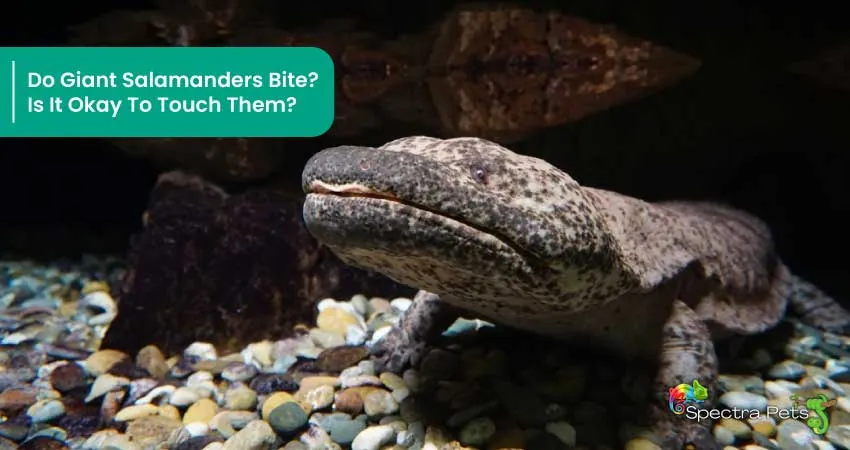
Well, as I have already mentioned, these creatures are generally non-aggressive and do not bite humans. These salamanders are not venomous or poisonous, and they do not have any natural defenses that make them a threat to humans. They are docile creatures that are not known to attack or bite people.
That being said, it’s important to remember that giant salamanders are wild animals and should be treated with respect. They can be sensitive to handling and may become stressed if they are handled too much or inappropriately. It’s best to observe these animals from a distance and not handle them unless it is absolutely necessary for their care and well-being.
Human Encounters with Giant Salamanders
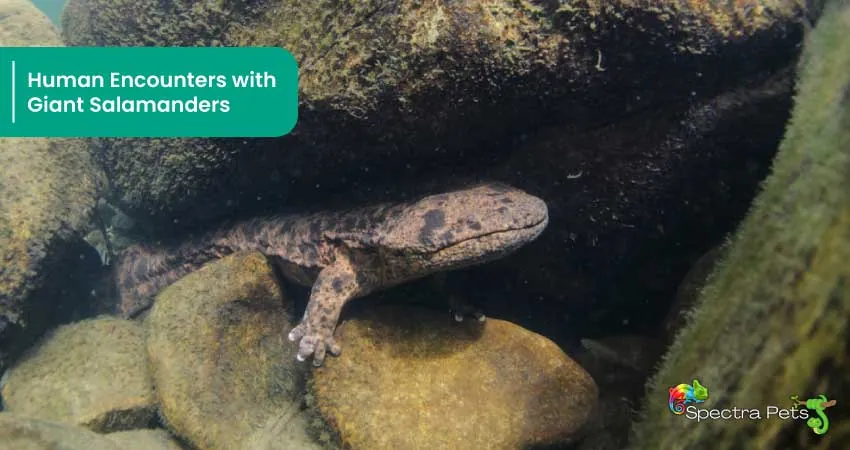
Historical and Cultural Significance
Giant salamanders have been a part of human culture and folklore for centuries. In Japan, the Japanese giant salamander is considered a symbol of good luck and is often depicted in artwork and literature. In China, the Chinese giant salamander is considered a delicacy and is often served in restaurants.
Conservation Efforts
Due to habitat loss and overhunting, many species of giant salamanders are now endangered. Conservation efforts are underway to protect these animals and their habitats, including:
- Habitat restoration projects
- Captive breeding programs
- Education and public awareness campaigns
Best Practices for Interacting with Giant Salamanders
To avoid potential risks associated with giant salamanders, it is important to follow these best practices:
- Do not handle or disturb giant salamanders in their natural habitat.
- If you come across a giant salamander, give it plenty of space and observe it from a safe distance.
- If you believe you have come into contact with a toxic secretion, seek medical attention immediately.
Wrapping Up
There is something mysterious about giant salamanders: they evoke awe and wonder in their observers. So, I’m sure there will be people who would love to have them as pets. I hope this article comes to their attention as it’ll make them stop hesitating, if they were.

